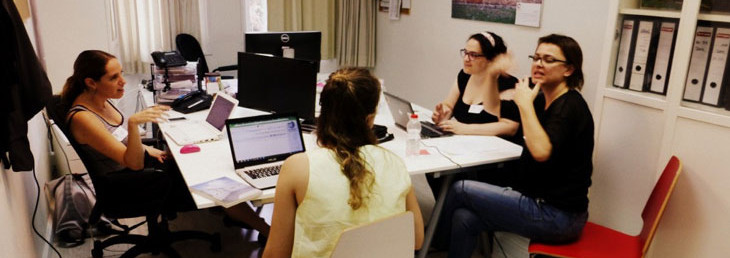Women are better collaborators (now scientifically demonstrated)

As it was discussed in our last post, the MIT is researching on collaboration. More specifically, its Center for Collective Intelligence (CCI) is trying to understand collective intelligence at a deep level, pursuing a new scientific knowledge on collaboration in a variety of disciplines that eventually would result in practical advances in many areas of business and society. Some of the Center’s endeavors include learning the way human brains are organized that could result in new ways to organize groups of people to perform more “intelligently”.
One of the mission of the MIT Center is developing theories of collective intelligence. Two main projects are currently taking most of their research time: First, developing a taxonomy of organizational “genes” that can be combined to harness the intelligence of crowds and, secondly, trying to measure Collective Intelligence. This last project’s goal is twofold: measuring the intelligence of groups using the same statistical techniques used in individual intelligence tests, and examining the factors that affect the “collective intelligence” of a group, such as its size, the collaboration tools it uses, and the gender and interpersonal skills of its members.
So, is it possible to measure the collective intelligence of a group? Analyzing the results of different studies carried out by the CCI, researchers are answering positively to that question. These studies found four different factors that might predict the collective intelligence of a group of people, four things that might account for the degree of collective intelligence in a team.
Four elements of collective intelligence
The first one could be considered the most obvious: the intelligence of the individual team members. Less evident was to find out that this correlation was not very strong. Before analyzing the results, researchers had expected that the group intelligence would be much more linked with the average or maximum intelligence of individual group members. Conclusion: just having a bunch of smart people in a group doesn’t necessarily make a smart group. Nothing maybe we all have already experienced, but now scientifically demonstrated and measured.
Some other factors we could suspect were significant studies probed to be not so substantial. For instance, group cohesiveness. Instead, research found three additional factors much more significantly correlated with the group’s collective intelligence. The first was the average social perceptiveness of the group members, this is the ability to correctly read the emotions of other people. The second factor was the equality of contribution: the degree to which the group members participated evenly. Again, this could be considered a confirmation of a group behavior we all have witnessed. For instance in meetings in which one or two people dominate the conversation and results are usually worse than in the case of meetings with a more distributed participation.
But CCI’s most provocative finding so far is that the higher the proportion of women on a team, the more likely its collective intelligence and the better the performance. But before creating any gender controversy, it’s fair to say researchers explain this third factor, at least statistically, by the first factor mentioned. It’s the ability to discern what someone is thinking, either by looking at their facial expression or through some other means of human observation, what makes members of a group more collectively intelligent regardless of whether they are men or women. But, as it is known and demonstrated in other studies, women on average score higher than men on the test of social perceptiveness, therefore women are, on average, more perceptive than men about their colleagues.
Collaboration influenced by hormones
CCI suggests the performance of teams and companies can be dramatically improved, but considering all the factors involved in collective intelligence it is just logical to wonder if those are learnable or cultivable skills. It turns out scientists do not know yet for sure, but the evidence implies a strong genetic component. Social perceptiveness, they say, may also be influenced by hormones and it’s been negatively correlated with high levels of testosterone. Those are reasons to believe it’s not very changeable.
But this does not mean there are no other ways for organizations and companies to be more collectively intelligent that changing the people are composed by (some other skill beyond collaboration are needed), so some other aspects should be considered in a group performance as motivation, incentives, structure (as the designing of nonhierarchical organizations, like crowd-based organizations), etc.
We hope the Center for Collective Intelligence will research about these factors too.
